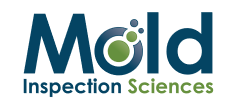Medical Facility Related Mold Infections
Can Mold Make You More Ill?
Water and mold damage in a building can be devastating, but the most damaging issues with mold and moisture are often hidden.
Mold can sometimes be visible and odor-producing while other times it can grow undetected inside the walls, under the floors, in the ceiling, or in HVAC systems. When not visible, it can leave you unaware of the potential risk.
You may have heard the recent news of deaths linked to mold infections at Seattle Children’s Hospital. The report details that since 2001, 14 children at the hospital developed infections from the mold known as aspergillus. Six of the 14 died. Once thought to be isolated incidents, the hospital now believes the air handling systems caused the infections and deaths.
Aspergillus is a common mold in many locations and exposure rarely causes problems for a healthy person. Symptoms vary, but generally include, fever, chills, shortness of breath, headaches, eye symptoms, chest pain, joint pain, and coughing up blood. These symptoms seem to resemble other respiratory illnesses, which is what makes them dangerous to those who are sick or have compromised immune systems.
Seattle isn’t the only area to have medical facility-related mold incidents. Another article reports that between 2014 and 2017, at least six deaths were linked to three different Pittsburgh area hospitals. These infections were also related to a commonly found outdoor fungal spore known as Mucor.
What Causes Medical Facility Mold?
Many times, mold and moisture related issues in commercial buildings can be linked to building structure issues or facilities maintenance. Even when a building is in excellent condition, mold may still be found. It takes three things for mold to grow – spores, a food source (e.g., building materials), and moisture. Hospitals and health care facilities have numerous areas where mold can thrive. Add a bit of moisture to the other conditions and mold will grow. A common place for mold growth in buildings is the HVAC System. Mold can quickly build-up, and while filters generally help, spores often bypass them traveling to other areas of the facility. The same air handler that feeds the lobby may also supply the medical wards, patient rooms, and other common areas.
Other common places for mold growth include:
- Inside walls, in between wallpaper, tiling, or on the surface
- In ceilings and attics where there may be a leak
- Underneath floors and floor materials and in crawl spaces
- Utility and maintenance rooms
- Around pipes and plumbing
- Roofing material when not properly installed or maintained
- Construction areas
Download Our Free Mold Response Guide

We developed this guide with the specific needs of medical facilities in mind
How to Identify Mold and Moisture Problems?
Identifying a possible mold problem means being on the lookout for often invisible clues. Facility staff should be educated on awareness.
Employees may not give a second thought to a water stain on the ceiling or walls, but the impacts reach further than just an unsightly spot. That damage means that moisture from condensation or a leak has already sparked a potential problem. Here’s how to identify warning signs:
- First things first, use your eyes. Look for areas with discoloration, staining, leaks, peeling paint, wallpaper, and areas of high moisture or humidity.
- Second, trust your nose. Notice any areas that smell musty or mildew-like? If so, it’s usually a good indicator that mold growth is present.
- Third, listen to patients and staff. Is there an increase in complaints? Persistent health symptoms? Unusual or new symptoms? Encourage staff to pay attention to indoor air quality.
In addition, facility staff should know if any construction or work zones are present – what’s happening and where - and be vigilant of regular facility maintenance.
It goes without saying that the need to minimize mold should be a top priority in any health care facility. If there is a suspicion of mold or moisture, get in touch with a specialized assessment professional as soon as possible – be certain the assessor does not have a conflict of interest by also providing remediation services. Develop procedures for reporting and responding to or suspicions of mold.
If identifying a potential problem requires the removal of building materials, which can further disturb and spread mold growth, be certain to work with an experienced and certified assessor and don't undertake this task without the proper training. Taking proactive measures can help protect patients, the facility, and staff. We recommend assessing and testing, as needed, all suspect conditions.

